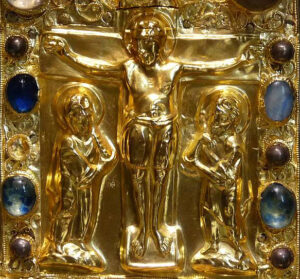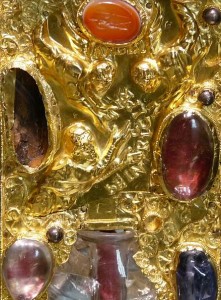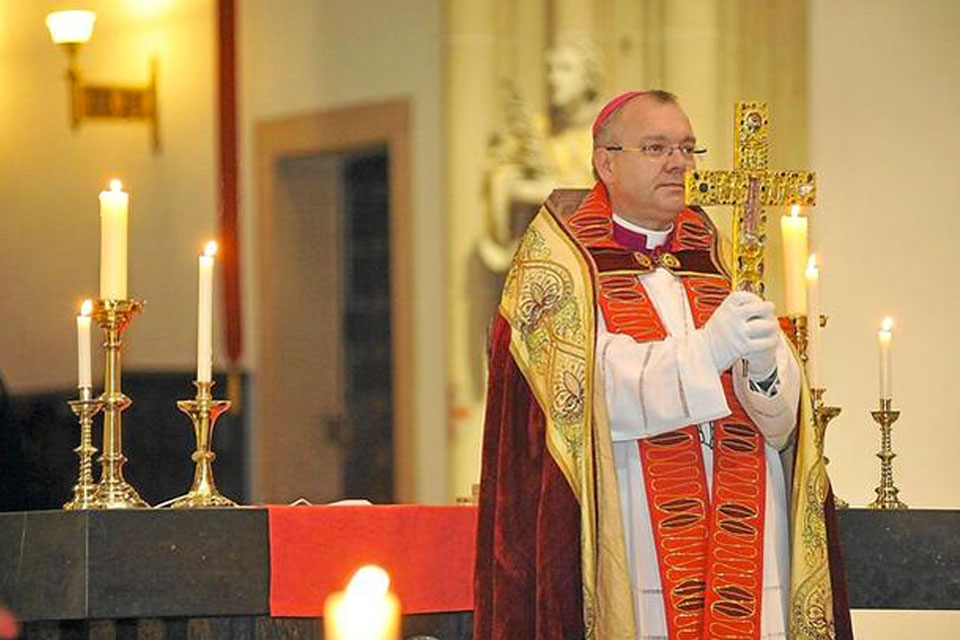A priceless Salian Cross from app 1050 has been stolen from the St. Nicomedes Church in Steinfurt in Germany

The Borghorst Cross is a priceless reliquary cross measuring 41,1 x 28,4 cm. It is made of gold plate covering a wooden core and embellished with gems, rhinestones and silver-pearls as well as three rock crystals covering 17 relics carefully wrapped in purple silk. Two of these rock crystals are Egyptian from the Fatimid era. The relics are listed on an inscription at the back and contains among others pieces from the true cross, the sponge, which moistened his lips, the bed of Mary and bones from a number of apostles and saints. On the arms of the cross are four gold-plates – on top the scene of the crucifixion and from the right to the left a procession of St. Damian, St. Peter, St. Paul and St. Cosmas worshipping the crucified Lord. Between the bottle – crystal and the lower fish-like crystal is a portrait of the German Emperor Henry III.This portrait is placed in the same location as other donor portraits on reliquary crosses from the same period.

It is speculated that the cross might have part of the penitence of Henry III, who had engaged in a serious conflict with the Billunger Nobles, who had founded the Nunnery in in Borghorst in 968. In connection with the uprising the count Thietmar of Billung was killed, the son sent into exile and all their land was confiscated. Amongst this was the cloister in Borghorst, which obviously served as the family foundation for the Billunger. It is generally believed that the Borghorster Cross was consecrated in connection with the imperial take-over of the protection of the nunnery. An analysis of the necrology shows that Thietmar was the last of the Billungs who was commemorated in Borghorst after which the imperial protector took first stage.
The same artist who created the cover for the Theophanu-evangeliar on show in the Landesarchiv Nordrhein-Westfalen is believed to be responsible for the cross made locally in Essen between 1046 – 1056.
Professor Gerd Althoff from Münster (who wrote his thesis on the necrology from Borghorst) says to Westfälische Nachrichten that “ the cross belongs to some of the most refined sacral objects from the 11th century and is from an art-historical point of view of enormous importance, not just in Westphalia but in all of Europe. He estimates that the value of the cross on the black-market is in millions of Euro. (It is insured for €7.5 mill). In itself the gold plates and stones are relatively worthless. He also stresses the fact that the relics embedded in the cross have played a part in the local liturgy for nearly a thousand years and still does.
SOURCE:
Westfälische Nachrichten 02.11. 2013
READ MORE:
Goldene Pracht. Mittelalterliche Schatzkunst in Westfalen
Ed by Gerd Althoff, Hermann Arnhold and Udo Grote
Hirmer Verlag 2012
ISBN-10: 3777450413
ISBN-13: 978-3777450414
